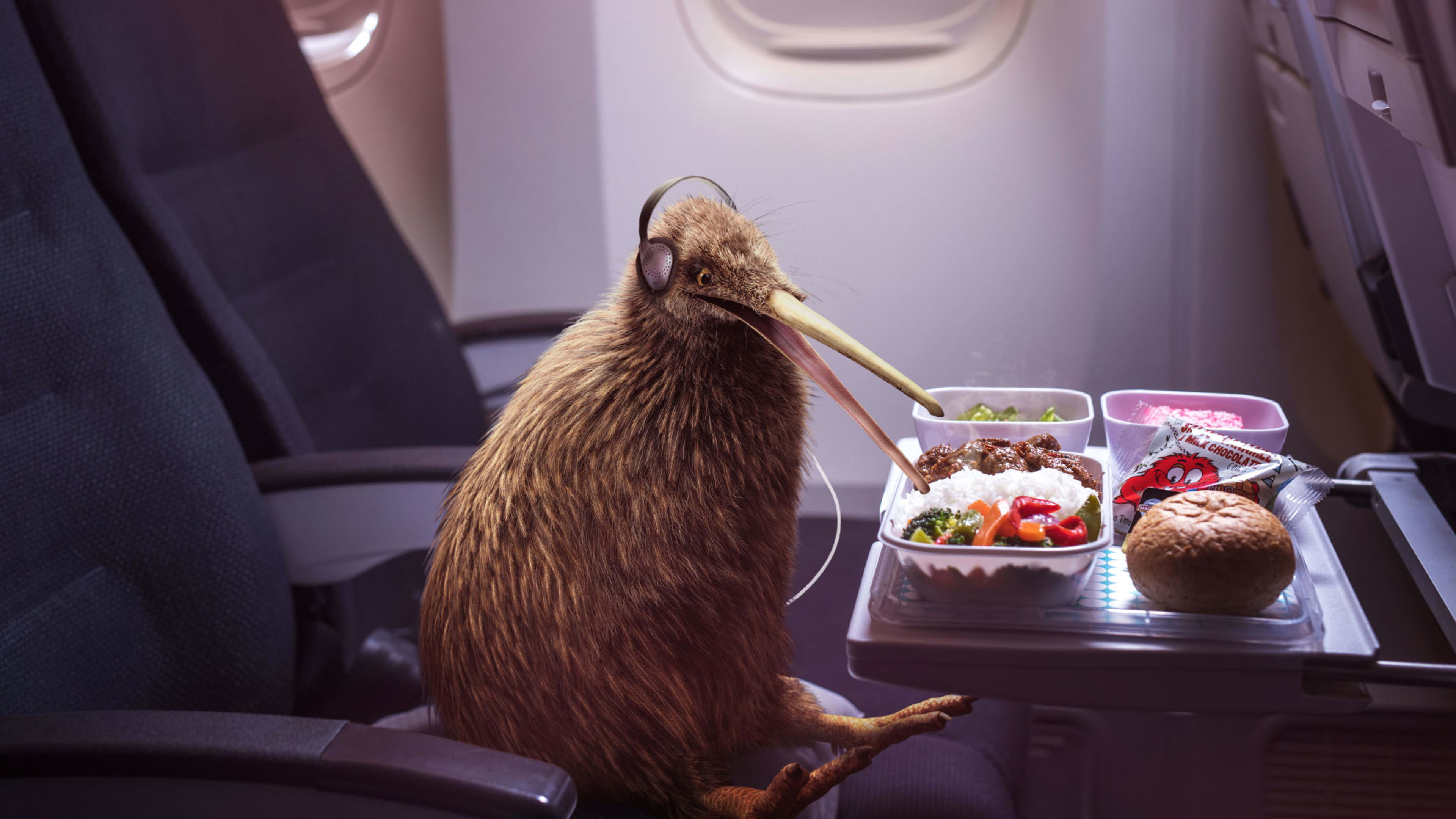Air New Zealand has a thing or two to teach Americans. First and foremost: that a kiwi is a type of bird, it’s not extinct, and despite being flightless, it is capable of flying perfectly well—at least when strapped into one of Air New Zealand’s coach seats.
In the plucky airline’s first global brand campaign aimed at U.S. and Canadian residents—starring a talking kiwi named Pete who is voiced by Jurassic Park’s Sam Neill—Air New Zealand will teach travelers all about the wonders of the kiwi bird and encourage them to follow their dreams to New Zealand (hopefully, on a certain airline).
The campaign is part of a concerted push for a growing number of American visitors. “Air New Zealand is probably the premium airline that you’ve probably never heard of living in America,” says Air New Zealand’s CEO, Christopher Luxon. “I would argue it’s the most successful airline in the world, by commercial results, customer results, and cultural results.” Some numbers may back him up: In 2016, Air New Zealand posted record profits of $663 million (which it shared with its staff in the form of bonuses) and the airline has been named Airline of the Year for the last four years in a row by the review website AirlineRatings.com.
https://www.youtube.com/watch?v=8oRJ2wFXZr0
Luxon says the entire company is built around innovations aimed at helping make flying better, faster, and more comfortable. “We are very, very consumer-led,” says Luxon, and that goes back to the company’s roots. Case in point, he says: hot water. “We were the very first airline in the world to actually boil water in flight,” says Luxon. “Believe it or not, back in the day they thought that you could not actually boil water at altitude and obviously we proved that wrong and in 1940 we started it on our services.”
These days, Air New Zealand’s innovations have moved far past tea service. They have biometric bag drops, created a service to remind customers when their passport is about to expire, made a fully reclining couch in economy class, and have started to 3D-print components for their planes, so if something like a tray or a seat breaks, they don’t have to ground the entire plane for repairs. “When we have a fault with a tray, we can replace it immediately,” explains Luxon.
In the words of the greatest informercial pitchman ever, but wait, there’s more: They were the first airline to make safety videos customers actually wanted to watch (their corporate YouTube channel is almost binge-worthy); they brought barista-quality coffee to their lounges and an app that will order it for you when you walk into one; they tried outfitting their flight attendants with HoloLenses; and they introduced an “Airband” that tracks unaccompanied minors on their journey, and sends texts to parents anxiously following along at home (they won an award for that one). Just this week, they introduced robot airport staff to help customers check in at the Sydney Airport.
“It’s been really good for our business,” says Luxon. “Our customers actually come back and they say we’re very happy to pay for that service because we really valued it.”
They are also considering trying to use augmented reality to make the flight to New Zealand seem shorter, or at least more interesting. “Ultimately you could you use that to change your experience in the cabin,” says Luxon. “You [could] have a goggle or a glass that actually turns that into a rainforest or has your 10-year-old sitting next to Barney or someone.” (Okay, that sounds terrifying, but you get the point.)
If you’re wondering what all that innovation has done to the ticket prices, the answer is not much. “Tickets from Auckland to L.A. were about $1,000 in 1987, and I think today they’re pretty much the same price,” says Luxon. They have a little more competition today, though, with Virgin Australia, Qantas, and even American Airlines angling for U.S. travel dollars.
That reasonable price is what has helped New Zealand become a prime destination for North American travelers: Already this year over 323,000 travelers have headed to New Zealand from the U.S., a 26% increase from one year ago. “U.S. is our third biggest market,” says Luxon, with Australia taking the top spot, of course. However, according to Luxon, “when you talk to Americans in research groups they tell you it’s anywhere from 20 to 41 hours of flying time to New Zealand.” In reality, a flight from Los Angeles to New Zealand takes about 12 hours to 13 hours. “Plus, all the flights leave at night,” says Luxon. “So you jump on board, you get great Kiwi wine, great Kiwi food, you watch a movie or to have an awesome sleep, and you wake up in the land of The Hobbit.”
Air New Zealand believes that around 27 million Americans are interested in vacationing in New Zealand, which means there is a lot of demand to be met—if they can convince U.S. travelers to get on the damn plane already. That’s where Pete the talking kiwi comes in. And since tourism now makes up about 10% of New Zealand’s total GDP, there’s a lot relying on a little flightless fruit, er, bird.
Recognize your brand’s excellence by applying to this year’s Brands That Matter Awards before the early-rate deadline, May 3.
